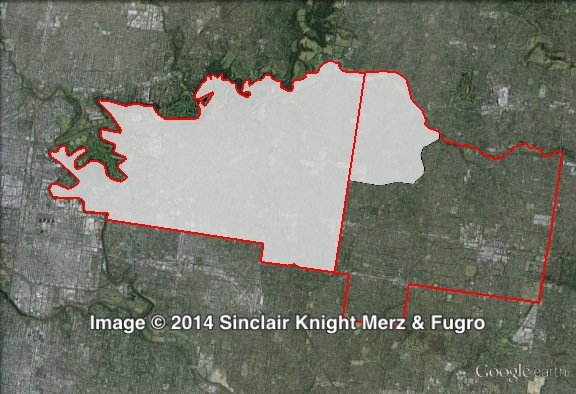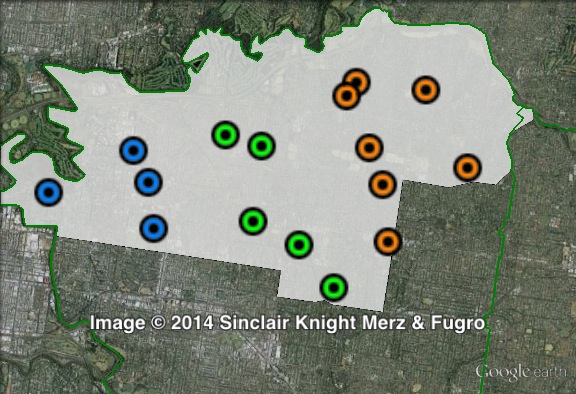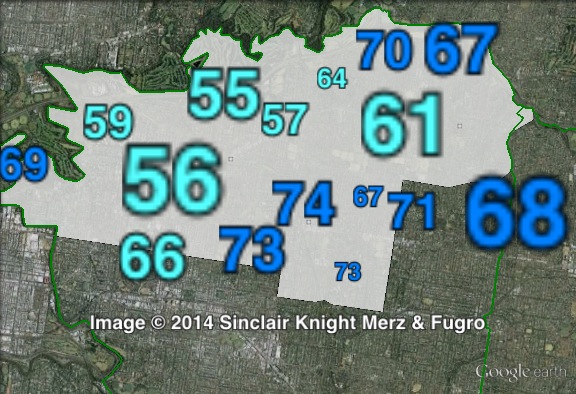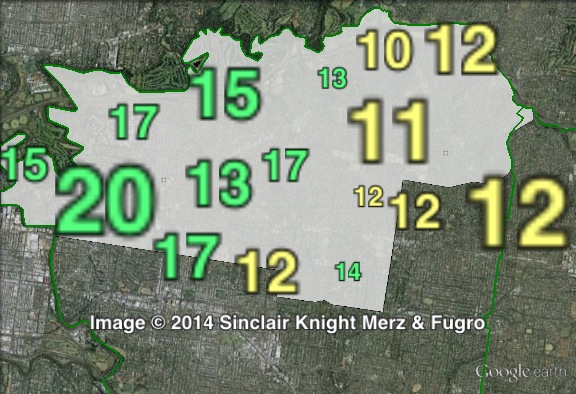LIB 15.7%
Incumbent MP
Andrew McIntosh, since 1999.
Geography
Eastern Melbourne. Kew covers suburbs on the eastern shore of the Yarra River, including Bellevue, Deepdene, Kew and parts of Balwyn, Balwyn North and Canterbury. Kew covers northern parts of Boroondara local government area.

Redistribution
Kew expanded to cover Balwyn North, gaining the area from Box Hill. This change increased the Liberal margin from 15.2% to 15.7%.
History
Kew has existed as a state electorate since the 1927 election, and it has always been held by the Liberal Party and its conservative predecessors.
In 1927, the seat was first won by independent candidate Wilfrid Kent Hughes. Kent Hughes, a former Olympic hurdler, had sought Nationalist preselection unsuccessfully before winning the seat as an independent, after which he rejoined the Nationalists.
Kent Hughes joined the new United Australia Party in 1931, and became the party’s deputy leader in the Victorian parliament in 1935. He served in that role until 1939, when he enlisted in the Army to fight in the Second World War. He was captured by the Japanese in Singapore in 1942 and spent the remainder of the war as a prisoner of war, all while continuing to serve as Member for Kew.
Kent Hughes served as Deputy Premier in the Liberal government from 1947 to 1949, when he resigned to take the federal electorate of Chisholm. He served as a minister in the Menzies federal government and as chairman of the Melbourne Olympic organising committee. He was dropped from the ministry following the 1956 Olympics, and he served as a backbencher until his death in 1970.
The 1949 Kew by-election was won by Arthur Rylah. The ALP gained power in Victoria in 1952, and in 1953 Rylah was elected as the party’s deputy leader. He became Deputy Premier when the Liberals won power in 1955, and served in that role until his retirement from Parliament in 1971.
The 1971 Kew by-election was won by the Liberal Party’s Rupert Hamer. He had previously served as an MLC for East Yarra province since 1958. A year later, Liberal Premier Henry Bolte retired, and Hamer became Premier of Victoria. Hamer served as Premier until 1981, when undermining by the conservative wing of the Liberal Party saw him resign as Premier, and then as Member for Kew. The Liberals lost the state election the next year.
The 1981 Kew by-election was won by Prue Sibree. She held the seat for the Liberal Party until her retirement in 1988. The 1988 Kew by-election was won by Jan Wade. She held the seat until her retirement in 1999.
Kew was won in 1999 by Andrew McIntosh. He was the first Member for Kew to gain the seat at a general election rather than a by-election since Kent Hughes had first won the seat in 1927.
McIntosh won re-elected in 2002, 2006 and 2010. He served as a minister in the Coalition government from 2010 until April 2013, when he resigned his portfolios after leaking confidential information to a journalist.
Candidates
Sitting Liberal MP Andrew McIntosh is not running for re-election.
- Lynn Frankes (Greens)
- Tim Smith (Liberal)
- James Gaffey (Labor)
Assessment
Kew is a safe Liberal seat.
2010 election result
| Candidate | Party | Votes | % | Swing | Redist |
| Andrew McIntosh | Liberal | 19,878 | 60.09 | +6.35 | 60.71 |
| Kate Jackson | Labor | 7,750 | 23.43 | -3.96 | 23.22 |
| Emma Henley | Greens | 4,879 | 14.75 | -1.34 | 14.32 |
| Timothy Hunter | Family First | 576 | 1.74 | -0.21 | 1.76 |
2010 two-party-preferred result
| Candidate | Party | Votes | % | Swing | Redist |
| Andrew McIntosh | Liberal | 21,560 | 65.19 | +5.63 | 65.70 |
| Kate Jackson | Labor | 11,512 | 34.81 | -5.63 | 34.30 |

Booth breakdown
Booths in Kew have been divided into three areas: central, east and west.
The Liberal Party won a majority of the two-party-preferred vote in all three areas, ranging from 61.4% in the west to 66.6% in the east.
The Greens polled quite well in Kew, with a vote ranging from 11.6% in the east to 17.6% in the west.
| Voter group | GRN % | LIB 2PP % | Total | % of votes |
| East | 11.58 | 66.61 | 12,570 | 32.22 |
| Central | 14.20 | 65.89 | 7,993 | 20.49 |
| West | 17.56 | 61.41 | 7,595 | 19.47 |
| Other votes | 15.31 | 67.85 | 10,859 | 27.83 |




Wilfred Kent Hughes was also in an Australian Light Horse unit in WW1 as well as a senior Army officer in WW2. Hughes organised the 1956 Melbourne Olympics. Hughes hated communists even more than Menzies did and before WW2 was in a newspaper article where he claimed to be a fascist (political philosophy but not a militarist)